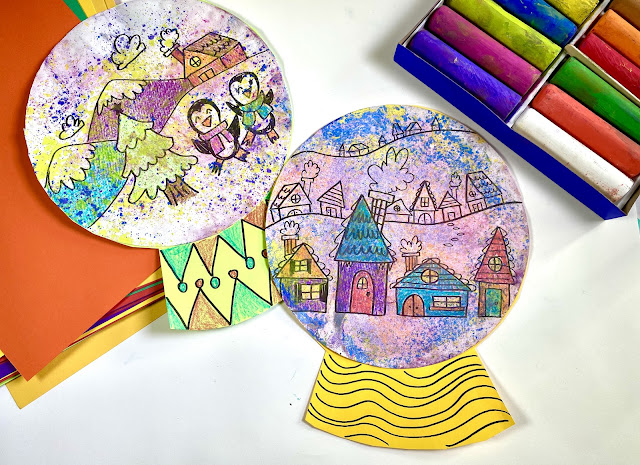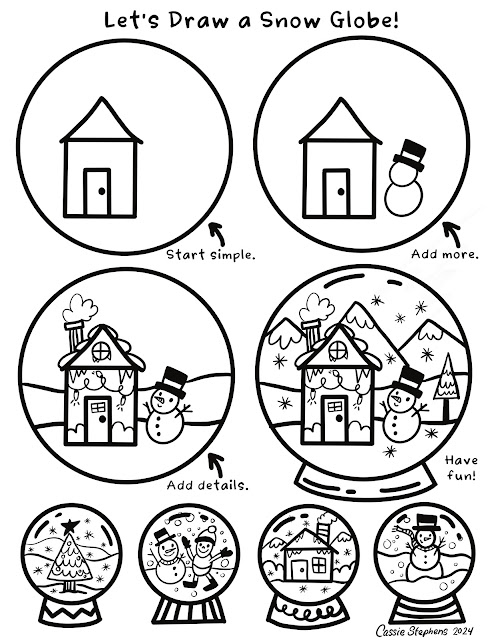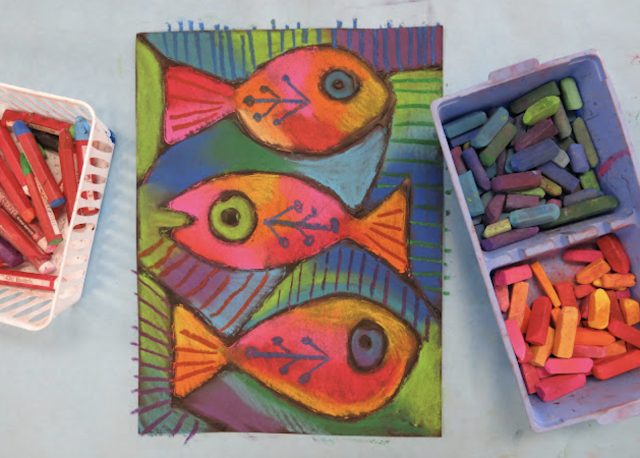In second grade we are working like crazy with our short 30 minute art classes to try our hands at two different paper treatments: floating chalk prints and shaving cream marbling. My goal has been for all of my students to attempt both processes twice before the end of class. It's a go-go-go kind of class but it's a lot of fun. When I shared a couple short videos of my students working on these papers, I got a lot of questions about the process. So I created a video that will walk you through each. I'll also go through the supplies needed in this here post. Here's the how-to video:
I have a feeling the kids are going to have a hard time deciding which beautiful papers to use for the covers of their Rainbow Book!
When doing these chalk prints, you can even use stencils to create a really cool look. Check out this blog post where we used star stencils.
The best part is, you don't have to "set" these creations as you would normal chalk pieces!
For shaving cream marbling, you'll need the following:
* Shaving cream. We used cheap dollar store stuff.
* Liquid watercolor.
* Paint brushes.
* Tongue depressors.
* Paper.
This process required more steps so some of my students would get excited and forget those steps. I made sure to appoint my Art Teachers in Training who did a wonderful job reminding kids of the steps. Yay!
I did not change out the bins of shaving cream or water. For the floating chalk prints, it was not necessary. For the shaving cream, it just meant that the following prints had more color.
Again, so pretty! I can't wait to see these on the covers of their books. Here are the books they are creating:
I'll be sure and update you with our completed Rainbow Books!

Supplies for floating chalk prints:
* Paper. I used 6" X 9" papers. These will be used for the covers of their Rainbow Book. I only order between 80- 90 lbs paper for the art room.
* Chalk. We used Freart Chalk by Prang. I like this chalk because it's high in pigment and thick like sidewalk chalk.
* Tongue depressors. We used the big ones which you can get cheap at the Dollar Tree.
* Tub of water. I made it so each my students had their own tub to save on time. I see my second graders at the end of the day so this meant I didn't have to hustle to move the tubs for my next class.
If you watch the video, you'll see just how easy this process is...and how beautiful the results are. I have a feeling the kids are going to have a hard time deciding which beautiful papers to use for the covers of their Rainbow Book!
When doing these chalk prints, you can even use stencils to create a really cool look. Check out this blog post where we used star stencils.
The best part is, you don't have to "set" these creations as you would normal chalk pieces!
For shaving cream marbling, you'll need the following:
* Shaving cream. We used cheap dollar store stuff.
* Liquid watercolor.
* Paint brushes.
* Tongue depressors.
* Paper.
This process required more steps so some of my students would get excited and forget those steps. I made sure to appoint my Art Teachers in Training who did a wonderful job reminding kids of the steps. Yay!
I did not change out the bins of shaving cream or water. For the floating chalk prints, it was not necessary. For the shaving cream, it just meant that the following prints had more color.
Again, so pretty! I can't wait to see these on the covers of their books. Here are the books they are creating:
I have done shaving cream prints before...but never in a closed container. I am never going back, y'all! The mess is contained...like, literally.
Have y'all done these kind of prints before? I'd love to hear about it! I'm also curious to know what you did with your beautiful papers. I'll be sure and update you with our completed Rainbow Books!















.jpg)


























.jpg)



































